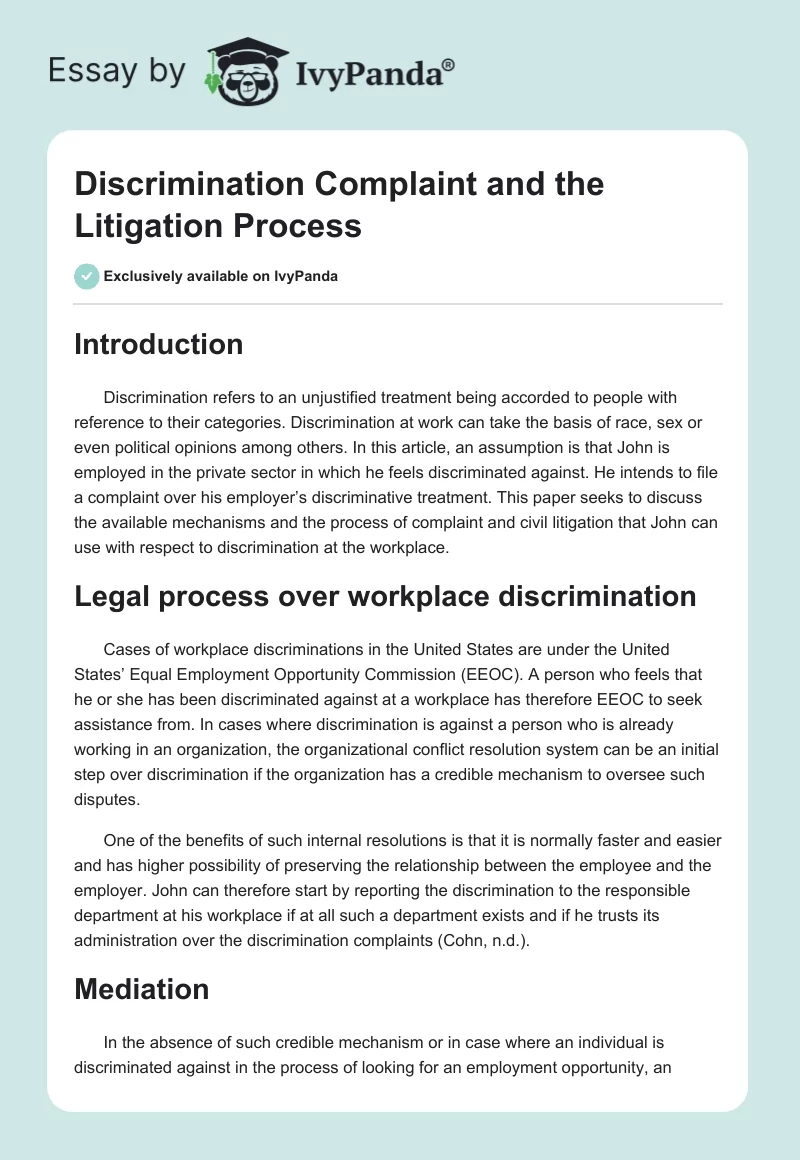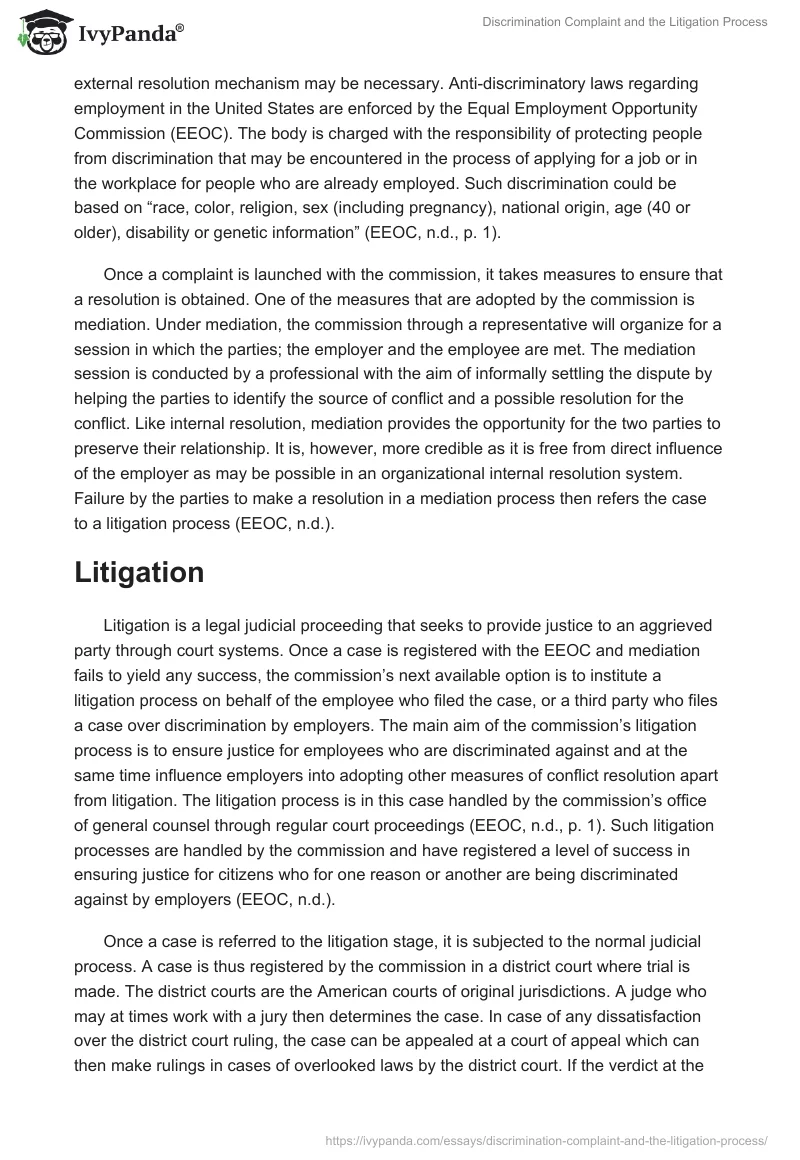Introduction
Discrimination refers to an unjustified treatment being accorded to people with reference to their categories. Discrimination at work can take the basis of race, sex or even political opinions among others. In this article, an assumption is that John is employed in the private sector in which he feels discriminated against. He intends to file a complaint over his employer’s discriminative treatment. This paper seeks to discuss the available mechanisms and the process of complaint and civil litigation that John can use with respect to discrimination at the workplace.
Legal process over workplace discrimination
Cases of workplace discriminations in the United States are under the United States’ Equal Employment Opportunity Commission (EEOC). A person who feels that he or she has been discriminated against at a workplace has therefore EEOC to seek assistance from. In cases where discrimination is against a person who is already working in an organization, the organizational conflict resolution system can be an initial step over discrimination if the organization has a credible mechanism to oversee such disputes.
One of the benefits of such internal resolutions is that it is normally faster and easier and has higher possibility of preserving the relationship between the employee and the employer. John can therefore start by reporting the discrimination to the responsible department at his workplace if at all such a department exists and if he trusts its administration over the discrimination complaints (Cohn, n.d.).
Mediation
In the absence of such credible mechanism or in case where an individual is discriminated against in the process of looking for an employment opportunity, an external resolution mechanism may be necessary. Anti-discriminatory laws regarding employment in the United States are enforced by the Equal Employment Opportunity Commission (EEOC). The body is charged with the responsibility of protecting people from discrimination that may be encountered in the process of applying for a job or in the workplace for people who are already employed. Such discrimination could be based on “race, color, religion, sex (including pregnancy), national origin, age (40 or older), disability or genetic information” (EEOC, n.d., p. 1).
Once a complaint is launched with the commission, it takes measures to ensure that a resolution is obtained. One of the measures that are adopted by the commission is mediation. Under mediation, the commission through a representative will organize for a session in which the parties; the employer and the employee are met. The mediation session is conducted by a professional with the aim of informally settling the dispute by helping the parties to identify the source of conflict and a possible resolution for the conflict. Like internal resolution, mediation provides the opportunity for the two parties to preserve their relationship. It is, however, more credible as it is free from direct influence of the employer as may be possible in an organizational internal resolution system. Failure by the parties to make a resolution in a mediation process then refers the case to a litigation process (EEOC, n.d.).
Litigation
Litigation is a legal judicial proceeding that seeks to provide justice to an aggrieved party through court systems. Once a case is registered with the EEOC and mediation fails to yield any success, the commission’s next available option is to institute a litigation process on behalf of the employee who filed the case, or a third party who files a case over discrimination by employers. The main aim of the commission’s litigation process is to ensure justice for employees who are discriminated against and at the same time influence employers into adopting other measures of conflict resolution apart from litigation. The litigation process is in this case handled by the commission’s office of general counsel through regular court proceedings (EEOC, n.d., p. 1). Such litigation processes are handled by the commission and have registered a level of success in ensuring justice for citizens who for one reason or another are being discriminated against by employers (EEOC, n.d.).
Once a case is referred to the litigation stage, it is subjected to the normal judicial process. A case is thus registered by the commission in a district court where trial is made. The district courts are the American courts of original jurisdictions. A judge who may at times work with a jury then determines the case. In case of any dissatisfaction over the district court ruling, the case can be appealed at a court of appeal which can then make rulings in cases of overlooked laws by the district court. If the verdict at the court of appeal is contested then another appeal is made to the U.S Supreme Court which has the final verdict over any given case (US Courts, n.d.).
Conclusion
Federal laws of the United States offer protection to employees and job seekers from discrimination that may be received from employers. Such laws are enforced by Equal Employment Opportunity Commission. The commission tries to resolve such reported cases and refer them to the judicial system if it fails to achieve resolutions.
References
Cohn, A. (n.d.). Enhancing internal organizational dispute resolution; leveraging learning from conflict. Web.
EEOC. (n.d.). U.S Equal employment opportunity commission. Web.
US Courts. (n.d.). Understanding federal and state courts. Web.


